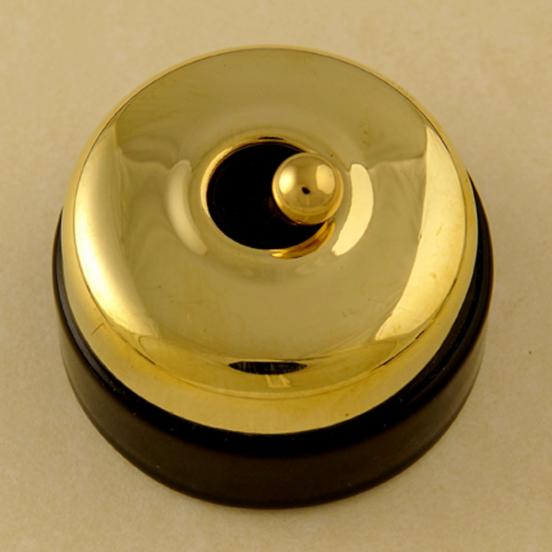
An authentic 2 1/4in diameter by 1 3/4in high brass domed ceramic light switch with modern electrical switch gear inside. This style of switch was current from the end of the First World War until the Second. This switch is suitable for 1- or 2- way applications.
Early Electric Switches.
When Edison and Swan first tried to popularise their new electrical lighting systems for domestic use their main competitors were the gas lighting companies. Heavy marketing was required to help potential customers understand the advantages of the new invisible power source and, Edison particularly, endeavoured to develop all the accessories necessary to make installation easy. Electricity was far less dangerous than gas, it was cleaner, did not smell, was instant in its operation and gave a brighter light.
To help his customers make the transition from gas to electricity, the earliest electrical switches were of a rotary type - one that emulated the gas tap that the public had been used to. Up until the first world war (in Britain at least - in US for longer) these switches were available. But, at least from the 1890s, numerous companies began to develop the toggle, tumbler, rocker or dolly switch that we know today.
All examples, until the advent of plastics (in this case Bakelite), were mounted on a ceramic insulating base. This was coloured black, brown or white and the switch mechanism was enclosed by a brass cover (or rarely a ceramic cover that could be ordered decorated in gold leaf and colours). The earliest were ribbed or fluted, popular until the 1920s, thereafter the cover was usually smooth.
These brass covers could be ordered in special finishes - the General Electric Company offered Oxidised Silver, Antique Bronze and Copper coatings. From the late 20s and early 30s the new material, Bakelite, found a use in electrical fittings. In the UK at least, these were available in mottled brown, marketed as Walnut, or white. Catalogues from the late 1960s were still carrying dolly switches made in Bakelite, but brass covered switches had disappeared in the wake of the second world war when metals were scarce.